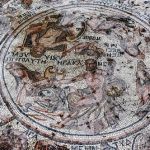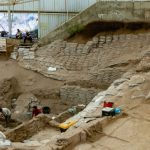 History
History  History
History  Pop Culture
Pop Culture 10 Cases of Grabbing Defeat from the Jaws of Victory
 History
History 10 Common Misconceptions About the Renaissance
 Weird Stuff
Weird Stuff 10 Crazy Things Resulting from Hidden Contract Provisions
 Facts
Facts 10 Unusual Facts About Calories
 Weird Stuff
Weird Stuff 10 Days of Humiliation When the Person Should Have Stayed in Bed
 Humans
Humans 10 Surprising Ways Game Theory Rules Your Daily Life
 Food
Food 10 Popular (and Weird) Ancient Foods
 Animals
Animals Ten Bizarre Creatures from Beneath the Waves
 Technology
Technology 10 Unexpected Things Scientists Made Using DNA
 History
History 10 Events That Unexpectedly Changed American Life
 Pop Culture
Pop Culture 10 Cases of Grabbing Defeat from the Jaws of Victory
 History
History 10 Common Misconceptions About the Renaissance
Who's Behind Listverse?

Jamie Frater
Head Editor
Jamie founded Listverse due to an insatiable desire to share fascinating, obscure, and bizarre facts. He has been a guest speaker on numerous national radio and television stations and is a five time published author.
More About Us Weird Stuff
Weird Stuff 10 Crazy Things Resulting from Hidden Contract Provisions
 Facts
Facts 10 Unusual Facts About Calories
 Weird Stuff
Weird Stuff 10 Days of Humiliation When the Person Should Have Stayed in Bed
 Humans
Humans 10 Surprising Ways Game Theory Rules Your Daily Life
 Food
Food 10 Popular (and Weird) Ancient Foods
 Animals
Animals Ten Bizarre Creatures from Beneath the Waves
 Technology
Technology 10 Unexpected Things Scientists Made Using DNA
10 Animals That Made Archaeological Discoveries
Every child dreams of finding buried treasure. They may long to be Indiana Jones-style adventurers delving into ancient mysteries. But at some point, they learn that archaeology is less about looting sites for gold and more about painstakingly excavating locations to preserve and record our shared past.
Animals, however, have no concept of protecting history and are more cavalier in how they go about digging up antiquities. This has led to a number of significant finds being made by amateur animal archaeologists. Here are ten of the best ancient treasures turned up by animals.
Related: 10 Animals That Could Actually Survive the Apocalypse
10 Badger Hoard
Badgers have a somewhat dubious reputation with archaeologists. While digging their large and labyrinthine underground setts, they often destroy archaeology, which is still buried underground. In some places, like the UK, this is a real concern. But just sometimes, while the badgers are excavating their homes, they turn up something important.
In 2021, in a cave in Spain, a badger had to dig further than usual to find food during an unusually severe cold snap. While doing so, it stumbled on a hoard of silver coins dating from the late Roman period. These were then discovered scattered over the floor of the cave and gathered up to be studied by archaeologists. They proved to be silver coins dating from a time when the Roman empire was beginning to lose hold of the West as Germanic peoples pushed into their territory.
In all, 209 coins were recovered thanks to the badger’s hard work.[1]
9 Mole Artefacts
Under English law, many ancient sites are protected monuments, and digging there is forbidden to preserve them for future generations. It is a strange fact that many archaeological sites are safer underground than they are after being exposed. Animals, however, do not abide by English law.
Hadrian’s Wall is one of the most exceptional ancient constructions in the UK, and its digs have revealed a treasure trove of important information about life in Roman Britain. At a Roman fort just south of the wall, where no humans are allowed to explore, researchers are sieving through molehills at the site for any small objects they bring up.
So far the moles have revealed Roman nails, fancy pieces of pottery, and beads from a necklace. Who knows what they will uncover next.[2]
8 Pig Stone Tools
On the Scottish island of Islay, a gamekeeper decided that the easiest way to clear the vegetation from his land was to let his pigs do the work. Pigs are very good at snuffling in the dirt to find food, but this time, they began to turn up stone tools used by some of the first people in Scotland.
The discoveries were good enough that archaeologists were called in to further explore the site. The tools found by the pigs date to the Mesolithic period, around 9,000 years ago. The archaeologists went one better when they excavated the area. They discovered tools that predated those found by the pigs by 3,000 years—making them the oldest evidence of human activity in Scotland. When the hunters who used these tools were in Scotland, much of the Highlands would still have been deeply buried under glaciers.[3]
7 Badger Bones
In the 6th century, Britain’s first center of learning was formed in Wales under the guidance of an Abbot called Illtud. There are many fabulous tales about St. Illtud involving miracles, King Arthur, and other unlikely events. Still, historians believe that Illtud was real and really founded a monastery. There were questions about where exactly this was, however.
The town of Llanilltud Fawr is named for the saint and the local church is dedicated to Illtud. Inside the church are ancient inscriptions naming Illtud and Welsh kings, so it seemed like a good place to look. But it was when badgers began to dig up human remains in the area that archaeologists began to take a closer look. These skeletons date back to the 7th century and could have belonged to monks in the monastery. Prompted by badgers’ finds, archaeologists have discovered other graves. They are closing in on one of the first sites of Celtic Christianity in the UK.[4]
6 Good Boy’s Bronze Haul

If there is one thing dogs like to do, it is dig. So it is perhaps unsurprising that dogs have unearthed a number of ancient treasures. In 2018, it was reported that a Czech man was walking his dog Monty through some fields when the dog began to dig. Soon, his paws brought up bronze objects that were around 3,000 years old.
What Monty had found was a hoard of Bronze Age tools and decorative bracelets. In the stash of artifacts were 13 sickles and several axe heads. Typically, finds from this period in the area are discovered individually and sometimes damaged. It is extremely unusual to see so many pieces together, and they may have been buried as part of a ritual.
Monty’s owner got a relatively minor monetary reward for finding these objects. What Monty got for his first archaeological dig is not known.[5]
5 Mole Hoard
Molehills are usually nothing more than a minor annoyance to owners of pristine lawns. As moles burrow underground searching for worms and insects to eat, they sometimes encounter treasure—but since gold and silver cannot be eaten, they tend to just kick it out of their holes with the rest of the dirt they dig.
When a Swiss farmer in Ueken was walking through his cherry orchard, he spotted a small glinting object in a molehill. On closer inspection, it turned out to be a Roman silver coin. After further excavations, a large hoard of silver and bronze coins was unearthed by human hands and not by mole. Over 4,000 coins dating from around AD 300 were discovered, making this one of the troves of coins ever found in Switzerland. The coins weighed over 33 pounds (15 kg) and must have represented a small fortune to whoever had first buried them at the site.[6]
4 Badger Tombs
Badgers seem to have a macabre fascination with digging up human remains. In 2012 a pair of sculptors were looking for a spot on their land to display their work when they noticed a badger hole—and poking up was a human pelvic bone. This was not entirely unexpected, as old graves had been found nearby, but these graves were something special.
After poking a camera into the badger sett, the discoverers spotted medieval jewelry and alerted archaeologists. Eight graves were found in all, dating from the 12th century, and two at least belonged to high-status men who were buried with their weapons and other markers of affluence.
Intriguingly, one of the men was found without a sword—suggesting his tomb had been opened in the past and this valuable object removed.[7]
3 Rat Nest Museum
Rats are not usually welcome house guests. They eat food, make a mess, and have been blamed for disasters throughout human history. No organic matter is safe from their nibbling teeth, and many valuable objects must have been ruined by their attention. When Oxburgh Hall in England was being renovated, however, the action of rats gave archaeologists their best insights into life in the 15th-century house.
Under the floorboards, builders discovered two large rat nests that had formed centuries ago. To make their nests, the rats had dragged down all manner of things, from Tudor-era silks and velvets to a page from a medieval manuscript. Over 200 pieces of textile were discovered and will shed light on clothes from this period that might otherwise not be known.[8]
2 Mole Strikes Gold
Finding buried gold at an ancient castle must be one of the highlights of any archaeologist’s career. In 2024, that dream was lived out—by a mole. While digging in the moat at the 14th century Dundonald Castle in Scotland, the mole turned up a gold ring set with a purple stone.
The ring was probably made in the early 1500s and was set with an amethyst, and would have been a very expensive object when made. Amethysts were thought to protect men in battle and give wearers a clear mind. The band of the ring is carved with a vine and leaves motif. No one can say how the ring came to be lost in the moat of the castle, but if the owner had not thrown it away, they must have been vexed to find it had slipped from their finger.[9]
1 Stray Cat Catacomb
Cats are not the most helpful of colleagues. They tend to do a lot of sleeping and rarely follow orders, which is perhaps why they have made little impact on the world of archaeology. In 2012, however, one cat led to the discovery of a Roman burial site known, appropriately, as a catacomb.
Mirko Curti was following his cat and trying to get it back in the house when he saw it disappear into a hole at the base of a low cliff. Recent rains had caused a fall from the cliff and revealed the cave the cat was now hiding in. Unable to lure the cat out, he followed the cat inside and discovered ancient Roman niches cut into the walls.
The holes in the wall once held the burned remains of Romans, but it appears the tombs were raided centuries ago. Without the hunt for a missing cat revealing them, the tombs might have been lost forever.[10]








